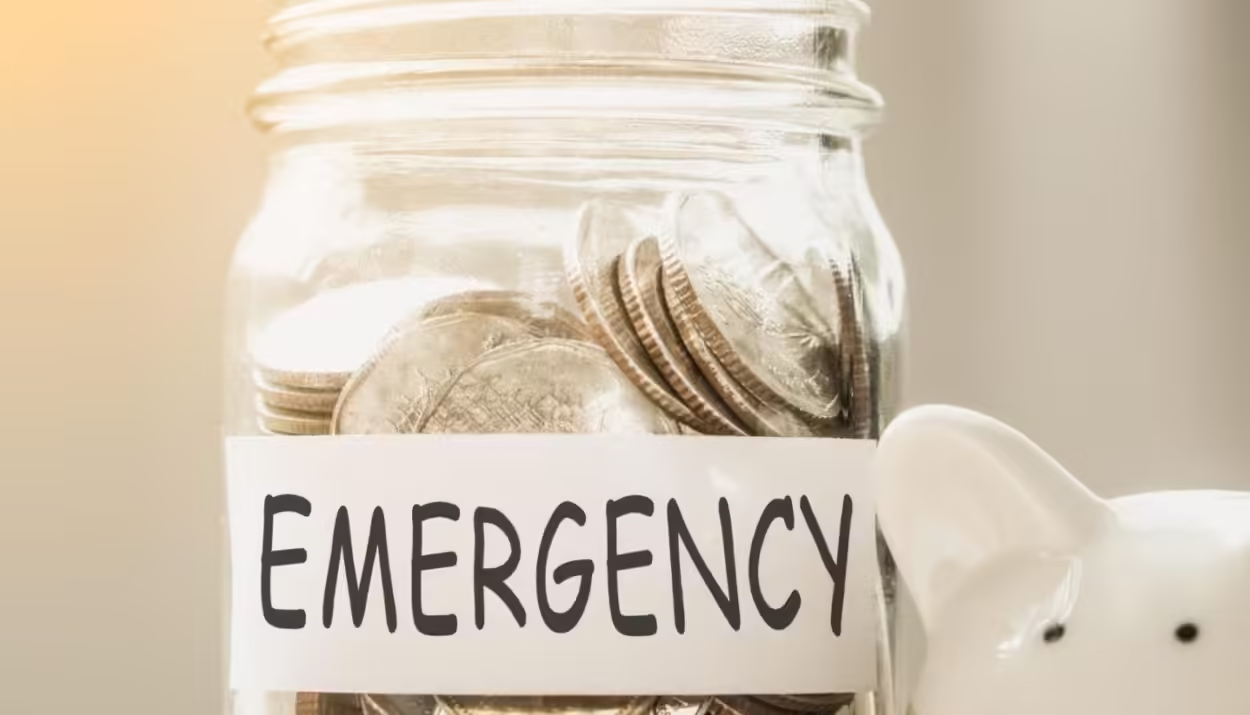Life is unpredictable, and that’s part of its charm. But it also means that unexpected expenses can hit when you least expect them—car repairs, medical emergencies, or even sudden job loss. These financial shocks can be stressful, but they don’t have to derail your financial stability. The key to weathering these storms? An emergency fund.
An emergency fund is like a financial safety net, designed to catch you when life throws a curveball. It’s your personal cushion against unexpected expenses, ensuring that you don’t have to dip into your savings, take on debt, or worse, compromise your long-term financial goals. But building an emergency fund doesn’t have to be a daunting task.
Contents
Determine how much you need
The first step in building an emergency fund is figuring out how much money you need to set aside. The general rule of thumb is to save three to six months’ worth of living expenses. This may sound like a lot, but remember, it’s not a one-size-fits-all amount. Your ideal emergency fund depends on your unique circumstances, such as your job stability, monthly expenses, and whether you have dependents.
Start by calculating your essential monthly expenses such as; Housing (rent or mortgage), utilities (electricity, water, internet), groceries, transportation, insurance (health, car, etc.) and loan payments (if any)
Multiply your monthly total by three to six to get your target amount. If you’re in a stable job with low risk of unemployment, three months might suffice. But if your income is irregular or you’re self-employed, aim for at least six months.
Set realistic savings goals
Once you know how much you need, break it down into manageable chunks. Saving a large sum can seem overwhelming, but setting smaller, achievable goals makes the process easier and more motivating.
Here’s how to do it:
- Monthly savings: If you need $6,000 for a six-month emergency fund, saving $500 a month will get you there in a year. If $500 is too much, start smaller and build up over time.
- Automate your savings: Set up a direct deposit or automatic transfer from your checking account to a dedicated savings account. This way, saving becomes a no-brainer.
- Celebrate milestones: Treat yourself (within reason) when you hit milestones, like saving your first $1,000. This will keep you motivated to keep going.
Prioritize your emergency fund
While it’s tempting to put off saving until you’ve paid off debt or saved for other goals, prioritizing your emergency fund is crucial. It’s your first line of defense against financial shocks, so it deserves top billing.
Consider these tips:
- Trim unnecessary expenses: Review your budget and identify areas where you can cut back, like dining out, subscription services, or impulse purchases. Redirect these savings to your emergency fund.
- Pause non-essential savings: If you’re saving for a vacation or a new gadget, consider pausing those contributions until your emergency fund is fully funded.
- Use windfalls wisely: Got a tax refund, bonus, or unexpected cash gift? Consider putting all or part of it into your emergency fund.
Choose the right account
Your emergency fund needs to be accessible, but not too accessible. You want it to be there when you need it, but not so easy to dip into that you’re tempted to use it for non-emergencies.
Here’s what to look for in an emergency fund account:
- High liquidity: Choose a savings account that allows you to withdraw funds quickly without penalties. A high-yield savings account or a money market account can be a good choice.
- Interest-earning: While your primary goal isn’t to grow this money, earning some interest is a nice bonus. Look for accounts that offer a higher interest rate than a regular savings account.
- Separate but accessible: Keep your emergency fund separate from your regular checking account to avoid the temptation to spend it on everyday expenses. However, it should still be easily accessible in case of an emergency.
Start small and build momentum
You don’t have to save thousands of dollars overnight. Start small, even if it’s just $10 a week. The important thing is to start. Over time, these small contributions add up.
Here’s how to get started:
- Round-up savings: Use apps or bank features that round up your purchases to the nearest dollar and save the difference. It’s a painless way to save a little extra each day.
- Save windfalls: Anytime you receive unexpected money, like birthday cash or a tax refund, add it to your emergency fund.
- Monthly challenges: Challenge yourself to save an extra $50 or $100 each month. You can make it fun by turning it into a game—compete with friends or family to see who can save the most.
Stay committed and avoid temptations
Building an emergency fund takes time and commitment, but it’s important to avoid the temptation to dip into it for non-emergencies. An emergency fund is for true emergencies—unexpected medical bills, car repairs, or job loss. It’s not for vacations, new gadgets, or even investing in the stock market.
Ways to stay committed:
- Define emergencies: Clearly define what constitutes an emergency for you. This will help you resist the urge to dip into your fund for non-essentials.
- Visual reminders: Place a visual reminder, like a savings goal tracker, in a spot you’ll see every day. This will keep you motivated and focused on your goal.
- Accountability partner: Share your savings goal with a trusted friend or family member who can help keep you accountable.
Review and adjust your fund regularly
Once you’ve built your emergency fund, don’t just forget about it. Life changes, and so should your emergency fund. Review your fund regularly, especially if you experience major life changes like a new job, moving to a different city, or starting a family.
Here’s how to keep it up-to-date:
- Annual review: Set a reminder to review your emergency fund at least once a year. Adjust your savings target as needed based on changes in your expenses or income.
- Increase contributions: If you get a raise or your financial situation improves, consider increasing your monthly contributions to your emergency fund.
- Replenish after use: If you have to dip into your emergency fund, make it a priority to replenish it as soon as possible. Resume your regular savings routine until your fund is back to its full target.
Enjoy peace of mind
Once you’ve built your emergency fund, give yourself a pat on the back. You’ve taken a big step toward financial security and peace of mind. Knowing you have a safety net in place can reduce stress and give you the confidence to face whatever life throws your way.
Final thoughts
Building an emergency fund is one of the smartest financial moves you can make. It’s not just about protecting yourself from financial shocks; it’s about taking control of your financial future. By following these steps, you’ll be well on your way to creating a solid emergency fund that gives you the freedom to live your life with confidence.
So, start today—because peace of mind is priceless, and the best time to prepare for the unexpected is now.






